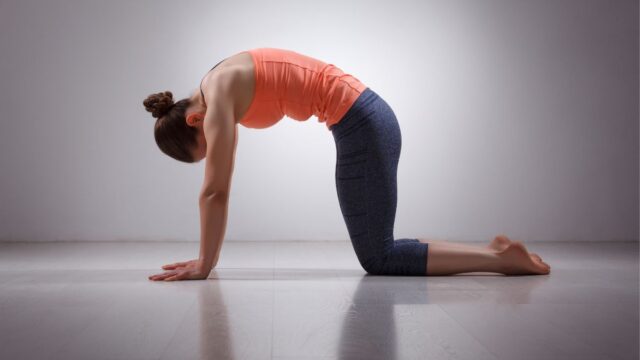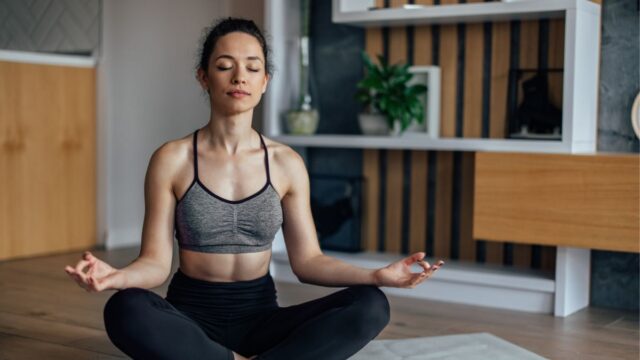Anxiety is an integral part of life and it varies significantly from the clinical condition of an anxiety disorder. Anxiety triggers symptoms like persistent and intense worry about regular life situations. In aggravated cases, it also leads to panic attacks, arising from fear, which can reach the peak within a few minutes. The symptoms are a challenge to control and, hence, can interfere with daily life. Anxiety may be the result of experiences that took place during childhood or teen years and continue well into your adulthood. In such cases, you need to avoid memories and incidents that are your triggers. There are different categories of anxiety disorders like social anxiety (social phobia), separation anxiety disorders, generalised anxiety disorder (GAD), and anxiety caused by specific phobias.
6 Causes & Risk Factors Of Anxiety
- Genetic history
- Chemical imbalances in the brain affect its normal functioning
- Environmental stress
- Other medical conditions like diabetes, heart problems, thyroid problems, among others
- Drug or alcohol abuse
- Traumatic incidents like the death of a loved one, divorce, accident, abuse, trauma, repressed memories, long-term sickness, and similar incidences may have affected us deeply
5 Reasons You Should Practise Yoga To Reduce Anxiety
- Yoga instils a sense of calm in your mind by enabling you to release anxious energy. This, in turn, helps you feel relaxed. This is especially true for slower yoga asanas like yin yoga and hatha yoga.
- Fast-paced yoga postures, on the other hand, work wonders in relieving stress, which is one of the root causes of anxiety and other similar mental health conditions.
- Standing and balancing yoga positions are effective in helping you feel grounded and stay in the present, although you may experience the same benefits with the postures that involve movement as well.
- Yoga stimulates the nervous system, which is essential in helping us perceive sensations that arise in our body.
- Pranayama, or the breathwork involved in yoga, acts as the bridge between the body and the mind and assists in calming your nervous system.
8 Yoga Asanas To Relieve Symptoms Of Anxiety
Here are 8 yoga postures for anxiety you can practise daily to help keep your anxiety levels in check:
1. Surya Namaskar (Sun Salutations)
- Start practising this yoga for anxiety and stress by standing up straight.
- Bend forward to touch your toes while exhaling deeply.
- Inhale while you gradually lift your head up while your hands are still touching your toes.
- Inhale again, place your right foot to the back and return to the original position in a low lunge.
- Bring your left foot back to where your right foot is placed, while keeping your body straight.
- Bend your knees, chest, and chin low while exhaling.
- Raise your buttocks high up while your elbows hug your ribs.
- Lift up your torso to resemble a cobra and look up and forward while inhaling.
- Next, exhale and maintain a position of a downward-facing dog.
- Lift your right foot while inhaling, hold it with your right hand, and go into a low lunge.
- Exhale and place your right foot forward, next to the right foot.
- Inhale while bringing yourself back to the starting position.
2. Marjariasana (Cat Pose)
- To practise this yoga for anxiety, come on all fours while your knees are hip-distance apart.
- Place your hips over your knees.
- Keep your toes in a flat position on the mat.
- Inhale while bending forward.
- Inhale to get your navel closer to your spine.
- Lower your head to bring your chin closer to the chest.
- Take a few breaths repeatedly to complete practising this yoga for stress and anxiety relief.
3. Bitilasana (Cow Pose)
- From the Cat Pose, drop your belly and broaden through your chest, while exhaling. Extend your tailbone forward and the crown of your head at the same time.
- Maintain an upright posture while rotating your inner elbows.
- Inhale to reach the Cat Pose and exhale to return to the first step of the Cow Pose.
- Repeat this step for 5 to 7 cycles of breath for this yoga for anxiety and depression, ensuring that you synchronise every movement with your breath.
4. Sukhana (Easy Pose / Comfortable Crossed-legged Seat)
- Lift your right arm over your head while inhaling as the first step of this yoga for anxiety and stress.
- Place your right palm over your left ear while exhaling as you turn your head to the right and draw the chin towards your chest.
- Hold the position for 3 to 5 cycles of breath and release, and then switch sides.
5. Marjaryasana (Cat Pose)
- Get down on your hands and knees in a tabletop position.
- Press into your palms while inhaling, round your spine to resemble that of a cat, and drop your chin, crown, and tailbone.
6. Uttana Shishosana (Extended Puppy Pose)
- For practising this yoga for anxiety and depression, get down on your hands and knees in a tabletop position. Move your knees backwards and your knees a little forward.
- Bend down till your forehead touches the mat while keeping your neck and shoulders relaxed.
- Inhale and exhale 5 to 7 times.
7. Ardha Hanumanasana (Half Splits)
- Get down on your hands and knees in a tabletop position, put your right foot forward into a lunge position and tuck your left toes beneath the right.
- Keep a shoulder-width distance between your fingertips, framing your front foot.
- Move your right foot forward, making sure your leg is almost straight.
- Shift your hips a little backwards to stretch the hamstring muscle of your right leg.
- Hold for 3 to 5 breaths before returning to a tabletop position and then switch sides.
8. Savasana (Corpse Pose)
- To practise this yoga for anxiety, lie on your back with your hands by your sides, a few inches away from your body, with your palms facing downwards.
- Relax completely.
- Close your eyes and focus completely on your breathing.
3 Yoga Breathing Techniques To Calm Your Anxiety
1. Deep Breathing
- Stand up and bend forward, keeping your knees slightly bent and your arms dangling by your side
- Inhale slowly and deeply and return to the previous position, lifting your hand last.
- Hold your breath for a few seconds
- Return to the original position while exhaling slowly, and bending forward
2. Teddy Bear Breathing
- Lie on your back, keep your hand on your chest, and place a teddy bear on your belly button.
- Close your eyes and relax your entire body.
- Inhale slowly through the nose, so the teddy bear rises every time you breathe in and out.
- After taking a deep breath, hold it till 3 counts, and then breathe out gradually.
- Repeat until you feel completely relaxed.
3. Mindful Breathing
- Choose something you can focus on, such as a single point, a calming sound like “om”, or a word. If you have selected the word “om”, keep repeating it till you feel relaxed completely. And, if it is a focus point, continue looking at it while breathing in and out.
- Whenever your mind wanders, take a deep breath and say “Thinking, thinking”. This will bring your attention back to your chosen focus.
- Relax completely
11 Additional Tips To Stay Calm
- Use positive affirmations like “I can do this”, “I’ve got what it takes”, and the like—anything to keep yourself inspired.
- Focus on activities that keep your mind from wandering; a hobby that you really like or a physically strenuous fitness routine.
- Aromatherapy soothes your senses and helps your mind stay calm. Pick up a candle or diffuser with an aroma that relaxes your mind and prevents you from feeling anxious.
- Write out all your thoughts in a journal to unburden your mind and make yourself feel relaxed.
- Detox digitally by staying away from your phone. Browsing through the internet is often the root cause of anxiety as you compare yourself to others who you feel might be doing better than you.
- Go for a long, relaxing shower where you can self-reflect and keep stress away.
- Make sure to indulge in some me-time, irrespective of how busy your schedule may be. Pursue activities that you love and learn new ones, or simply curl up in your favourite cosy nook with a hot cuppa’ while doing nothing.
- Drink water because dehydration can aggravate the symptoms of anxiety by causing heart palpitations. This can trigger a panic attack. Hydrate yourself at regular intervals, especially when you’re feeling anxious.
- Talk to friends and family who understand you well. Create a support group of friends and family that are close to you, to whom you can reach out whenever you need.
- Kick the butt for living a healthy life, not just for keeping stress and anxiety away. Also, keep a check on alcohol consumption as it changes serotonin levels and other neurotransmitters in your brain, contrary to the popular opinion that it calms you down. The symptoms of anxiety hit you harder once the effects of alcohol have worn away.
- Avoid caffeinated drinks like coffee and aerated beverages as it induces symptoms of anxiety.
Yoga treats various mental health conditions and anxiety is just one of them. As we’ve discussed before, it stabilises your breathing and calms your nervous system, relieving stress and other anxiety symptoms, including depression which often accompanies feelings of anxiety. Follow the yoga positions and other breathing exercises listed above to alleviate symptoms of anxiety and lead a stress-free life.
Open up like never before and participate in conversations about beauty, entrepreneurship, mental health, menstrual & sexual health, and more. Desi women, join our community NOW!



